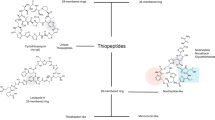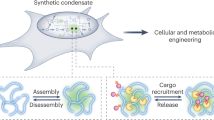Abstract
Now that synthetic biologically active peptides are becoming readily available, some biologists are using them without realizing that they are neither as stable nor as pure as sodium chloride.
Similar content being viewed by others
Article PDF
References
Leary, W. P., thesis, Univ. Oxford (1970).
Pickens, P. T., Bumpus, F. M., Lloyd, A. M., Smeby, R. R., and Page, I. H., Circulation Res., 17, 438 (1965).
Somlyo, A. P., and Somlyo, A. V., Pharmacol. Rev., 22, 257 (1970).
Author information
Authors and Affiliations
Rights and permissions
About this article
Cite this article
VANE, J. Purity and Stability of Synthetic Peptides such as Angiotensins and Kinins. Nature 230, 382 (1971). https://doi.org/10.1038/230382a0
Received:
Issue date:
DOI: https://doi.org/10.1038/230382a0
This article is cited by
-
Mitigation of indomethacin-induced gastrointestinal damages in fat-1 transgenic mice via gate-keeper action of ω-3-polyunsaturated fatty acids
Scientific Reports (2016)
-
Reputed rat scotophobin prepared by a solid-phase procedure shown invalid by comparison with a product derived from a classical synthesis on the basis of physical and biological properties
Experientia (1975)
-
Improvement of renin determination in human plasma using a commonly available renin standard in a radioimmunological method
Klinische Wochenschrift (1975)



